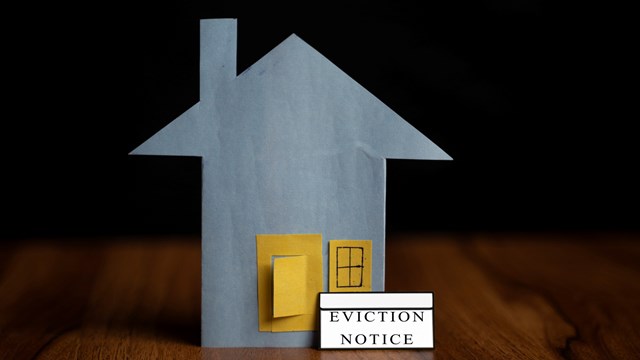
Much as the subprime mortgage market has dominated recent financial news, there is no readily agreed upon definition of the term. The most common description is the lender-given designation for borrowers with low credit scores (FICO score less than 620, for example), with little credit history and little documentation, and with other types of credit impairment.
Subprime loans barely existed in 1995, but, by 2006, these loans comprised 20 percent of all first lien mortgages. From another perspective, subprime loans grew from an estimated $95 billion in 2001 to more than $450 billion in 2006. More significantly, 56 percent of all subprime mortgages were used to refinance existing mortgages and some significant portion was used to purchase second homes. Since 1998, it is estimated that only 9 percent of subprime loans were made to first-time homebuyers. To make matters worse, other nontraditional loan products also required less documentation and underwriting. At least $300 billion in adjustable rate mortgages, more commonly known as ARMs, will reset this year.
As housing prices have bottomed out and even declined in certain markets, many nonprime mortgage borrowers, faced with various personal economic issues, including re-adjusting ARMs, are now headed toward foreclosure (which is usually defined as heading into the process of foreclosure). In a recent survey of mortgage delinquencies, of the 18 Metropolitan Statistical Areas (MSAs) that posted the highest rates, 12 were located in California and three were in Massachusetts. According to FreddieMac, the annual increase of the price of housing during the first quarter of 2007 in New England was -2.4 percent. The Center for Responsible Lending estimates that more than 2 million homeowners who utilized subprime mortgages will face foreclosure in the next two years. In the New England states, the number of foreclosures during the fourth quarter of 2006, with the exception of Vermont, was higher than the U.S. average, and in Massachusetts, New Hampshire, and Rhode Island the number was higher by a full percentage point.
As a result of the delinquencies, many mortgage companies specializing in such loans have collapsed, and more defaults are on the way. During the second week of June 2007, the stress created by subprime mortgages spread to the Collateralized Debt Obligation (CDO) market. Bear Stearns Companies, one of the nation's largest investment banks, had to pledge up to $3.2 billion in loans to bail out one of its hedge funds that had heavily invested in the subprime market. It is hard to predict whether these combined defaults (foreclosures and bailouts) will negatively impact housing in general, since most mortgages are securitized, but as the subprime market continues to erode , this deterioration will lead to tighter underwriting (as it should) and it may lead to more of that great euphemism—market adjustments.
The 2007 Housing Market
In the "Declaration of Housing Policy" of Title II of the Housing Act of 1949, Congress first articulated a national housing policy for "the realization as soon as feasible of the goal of a decent home and suitable living environment for every American family." Nearly 60 years later, the number of Americans who own their own home has increased significantly.
Between 1994 and 2004, the rate of homeownership increased from 64 percent to nearly 69 percent. Historically, the number of people aged 55 and older who own a home has been a driver of rate increases, but in the past decade, the propensity to be a homeowner regardless of age has had more of an effect. Taken in combination with immigration and favorable mortgage markets and mortgage instruments, the desire to own explains most of the rate increase.
Declines in Home Value and Equity
In the early part of 2007, there were probably 650,000 homes for sale in the new home inventory, and the outlook for the market was gloomy. It is projected that home prices will decline by anywhere from 3 percent to 8 percent depending on the market. Homeowner equity as a percentage of market value has already shrunk a percentage point from a year ago. The Federal Reserve Board reported that homeowner equity, as a percent of market value, fell to a record low 53.6 percent (YR2006 3Q), compared to 54.0 percent in YR2006 Q2, and 54.6 percent one year ago. Even more worrisome, during the third quarter of 2006, homeowners borrowed almost the entire amount that their homes increased in value. Homeowner market value increased $194.5 billion in Q3, to $20.48 trillion. Meanwhile homeowners' mortgage debt increased $180 billion. Homeowners borrowed 92 percent of the increase in market value.
Reviewing these changes from another perspective, several measures of debt and income, including mortgage debt as a percentage of total household income and as a percentage of household assets, have both undergone significant changes, as shown on the next page.
Aging Housing Stock
Community associations are an important part of American housing. Although associations constitute just one piston in the much larger engine of American housing, they include one unique feature. While predominately single-family in structure, because of the binding nature of association covenants, what would otherwise be traditional single-family developments now share many of the same characteristics of multifamily projects. All types of housing are getting larger, more expensive, and older. As associations age, the allocation of homeowner responsibility for common element components within a unit's boundaries may become problematic unless carefully analyzed and backed by appropriate funding. The 2005 American Housing Survey documented that the median year-built of all housing was 1973—namely, one half of all housing in America was built before that date and one half after that date. From another perspective, based on the AHS, nearly 72 percent of housing was built before 1984.
Community Associations
In 1970, there were approximately 700,000 homes in 10,000 community associations in the United States. As part of a mid-1970 report, HUD projected that by the late 1980s, 50 percent of American homes would be part of community associations. Although premature, the HUD prediction was not off by much. Estimates today are that 85 percent—90 percent of all new for-sale housing is located in one of the three basic types of community associations. Somewhere between 40 percent and 60 percent of the country's community associations are contract managed by specialized community association management (CAM) companies while the other 40 percent to 60 percent are self- managed either solely by volunteers or with association-hired staff. In California, as in New England, it is estimated that has many as 75 percent might be self-managed by some definition. Regardless of management structure, all associations are governed by a volunteer board of directors elected by the membership.
Subprime Solutions
The June 8, 2007, edition of the Federal Register published the National Credit Union Administration's "Illustrations of Consumer Information for Nontraditional Mortgages." This document has been approved by the Interagency Task Force on such mortgages as a consumer-oriented explanation of the financial impact of non-traditional mortgages. The Federal Register, according to Web site www.gpoaccess.gov/fr/index.html, is "published by the Office of the Federal Register, National Archives and Records Administration (NARA)...[and]... is the official |daily publication for rules, proposed rules, and notices of Federal agencies and organizations, as well as executive orders and other presidential documents."
The solutions outlined in the document may help in the future, but subprime problems exist right now. Three steps that might help New England community association with respect to the burdens of subprime mortgages today are:
• Step Up: Compared to the rest of the nation, New England states tend to be better able to afford the cost of public services. It is time for New England state governments to step in and help with not only mortgage delinquencies, but also with association assessment delinquencies.
• CAAP Lien: Six states (including Massachusetts) and the District of Columbia have some version of the Community Association Asset Protection Lien (CAAP lien, sometimes called the super lien). These laws give the association a certain amount of lien priority over the mortgage lender. The CAPP lien not only provides fiscal strength to look after a lender's ailing asset (the foreclosed association unit), but it possibly causes the lender to take remedial action with its borrower sooner rather than later.
• Payment Plans: Depending on state statutes and governing documents, associations should work to compile payment plans for defaulting owners. Most owners want to pay and keep their homes and, at worst, some money is worth more than no money.
In the end, U.S. housing functions in a market-based system, with the accompanying booms and busts. That fact will be true whether subprime mortgages exist or not. Absent a coherent national housing policy, to paraphrase Tip O'Neill, all housing finance help will be local. Any proposed solutions may take time to implement, but now is the time to help not only those who are currently stressed, but also to plan for future cycles.





Leave a Comment